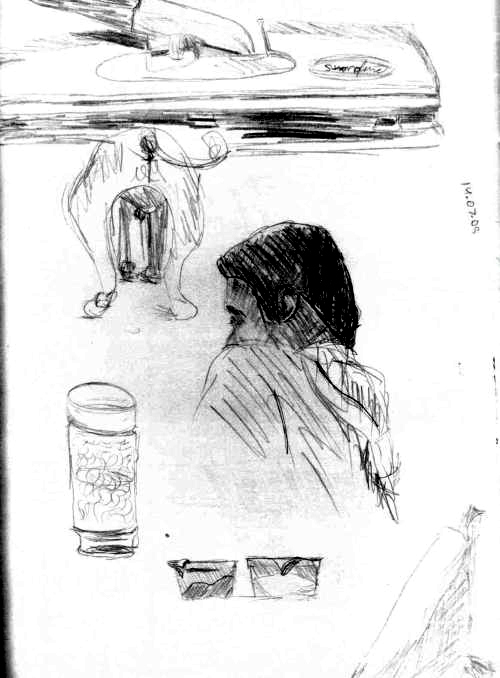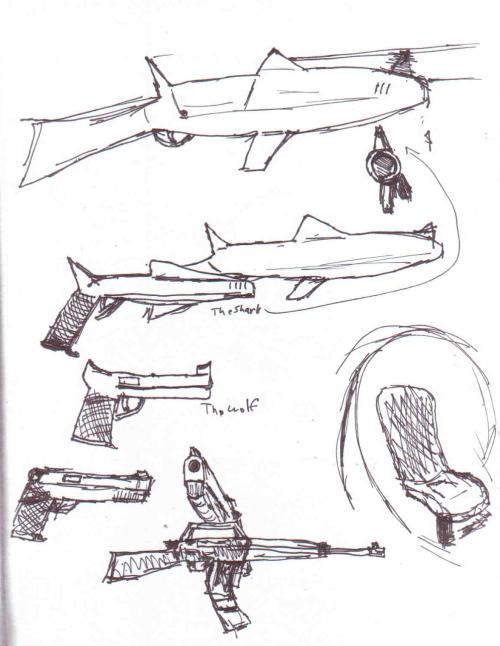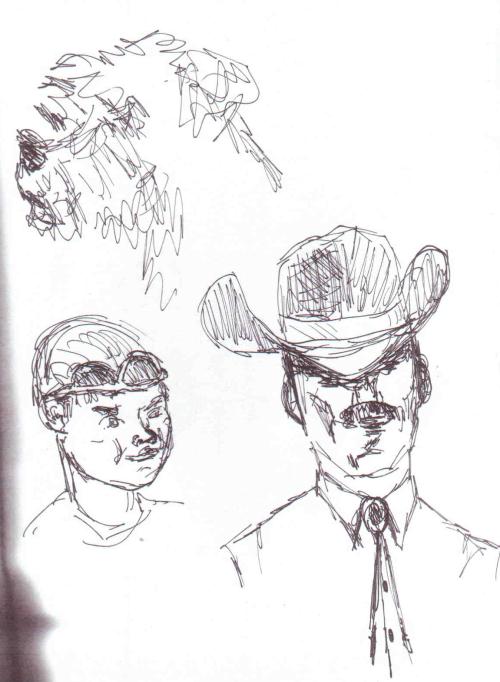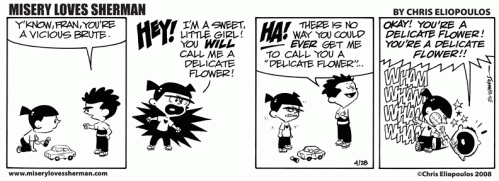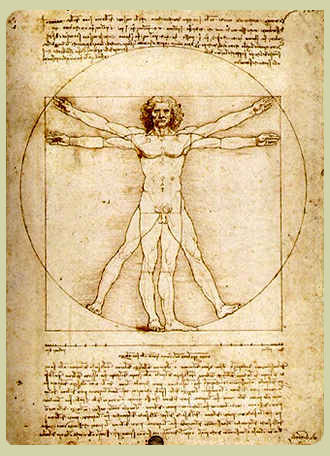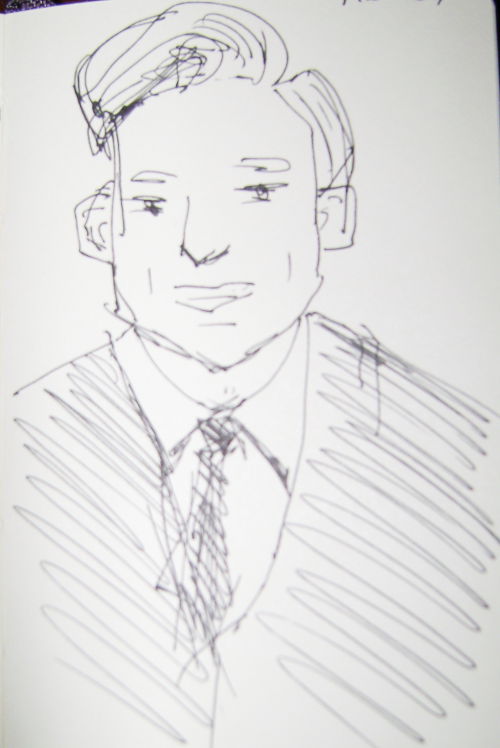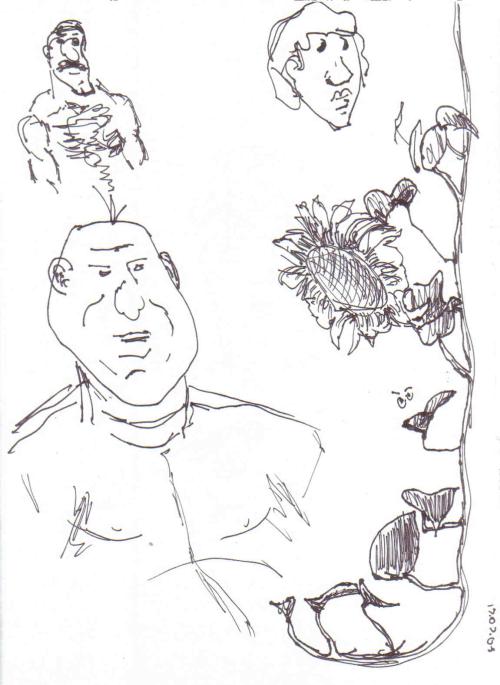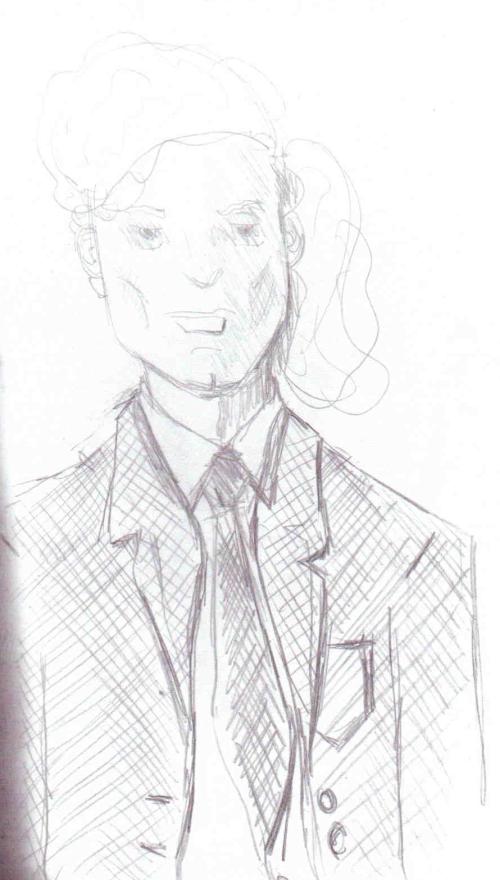Today I thought I’d give you all a look at some of the tools I use for sketching/drawing.
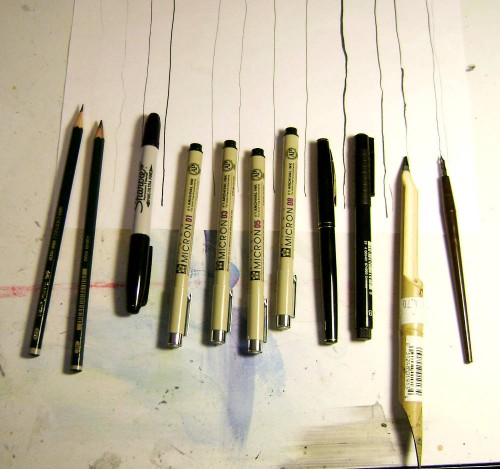
- HB is a hard lead that makes lighter lines when at equivalent pressure to the
- 4B pencil there are softness in between them, and harder leads also. Find what you prefer. I tend to be very heavy handed, so I like the softer leads.
- Sharpies are great for doodling, and inexpensive. I like the ultra fine point, but the fine point is great for filling in black areas. Not archival, if you want that.
- The Microns come in various tip sizes. The ones shown are what I use. They make a nice solid non varying line, great for technical things.
- The Kuretake is wonderful, it is a brush that doesn’t need to be dipped in ink every few minutes, and makes some beautiful lines, as you can see. Expensive , but worth it, I just wish the ink was a little blacker.
- The Pitt is similar to the Kuretake, but his a solid brush point, instead of individual “hairs”. It has less give, and less variance in the line. It’s a lot cheaper, but is not intended to be reused, although it can be refilled with some work.
- The bamboo pen I bought on a whim, and really liked the line I got with it. It’s double ended with a fine point, and a slightly larger one on the opposite end.
- The Hunt crowquill is an old stand-by, and it starts out stiff, but the more you use it the wider the lines tend to be, so most people use a new one for fine lines, and a broken in one for wider lines.
I, also, use a #3 and #2 round brush for some inking , and various other size brushes for filling in black areas.
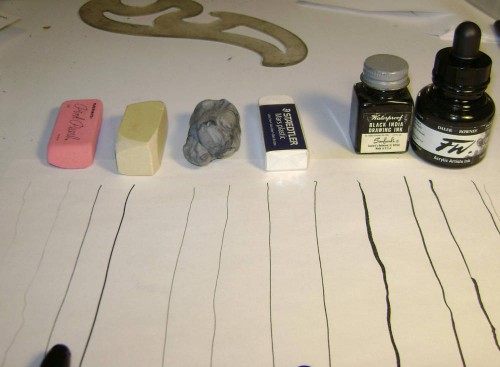
The plastic and kneaded erasers are gentler on paper than the others, and tend to et more use. The kneaded is good for getting into the deeper grooves from my heavy hand.
Those are a couple of the inks I use. I, also like PH Martin’s dye inks, which come in various colors.
So there’s a look at some of the tools I use for drawing. There are others, and I’m always finding new things to use, I find that whatever’s handy works at various times, so there’s no need to spend lots of money if you’re just doing it to have a good time, or whatever

